Rippon Boswell goes Live
The Major Autumn Sale at Rippon Boswell in Wiesbaden, Germany on Saturday 29th November 2014 was auctioneer Detlef Maltzahn’s first venture into the world of real-time online bidding through liveauctioneers.com. The sale included more than 260 antique carpets, rugs, flatweaves, tapestries, embroideries and other textiles, as well as rare carpet books, with consignments ranging from classical carpets through urban, village, tribal and nomad rugs and trappings as well as Asian and African ethnographic textiles and European tapestry.
Overall the sale went well, with some 60% sold by volume, of which more than 5 percent went to internet bidders. The launch of online bidding, while not without minor teething problems, was successful, although liveauctioneers will need to develop a way to deal with lots that are only provisionally sold under German auction law.
In a sale with a considerable number of very accessibly priced pieces, most of which sold well, star of the day, as anticipated, was lot 176, the rare Turkmen Eagle-göl Group 1 carpet with a banded chevron design from the Mike Isberian Collection. This highly desirable item sold to a new UK based private collector for just €61,000 ($75,030), bidding against a leading German collector, despite the presence in the room of one of the USA’s most visible Turkomaniacs.
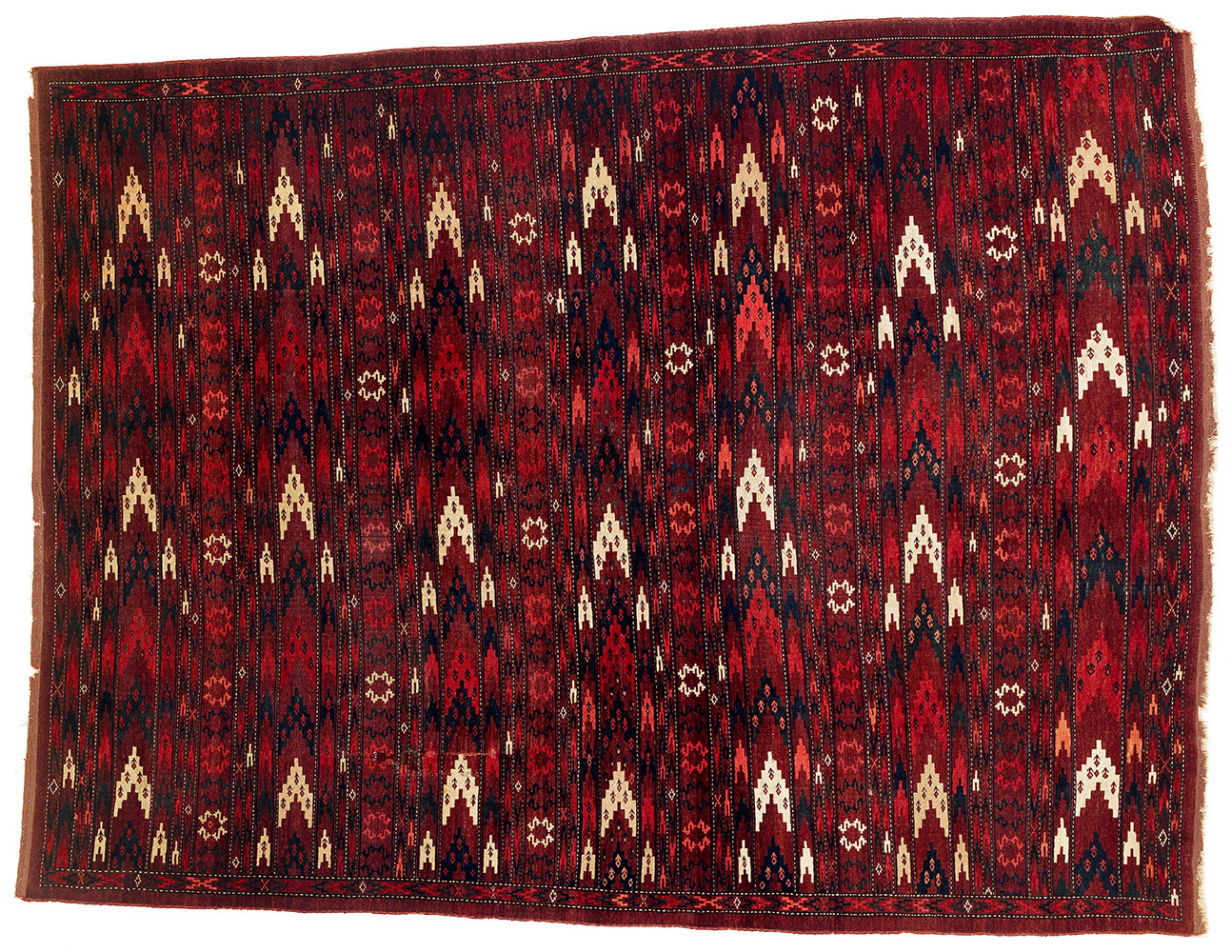
Lot 176, Turkmen ‘Eagle göl Group 1′ carpet, 18th century, 172 x 224 cm, estimate €42,000, sold for €61,000 ($75,030)
Out of a less exciting than usual Turkmen consignment, the next most expensive item was lot 110, the Kalman Tekke khalyk, with fetched €14,640 ($18,005), compared to its previous outing in the same rooms in May 1996, when it sold for $10,710 (HALI 88, p.145).
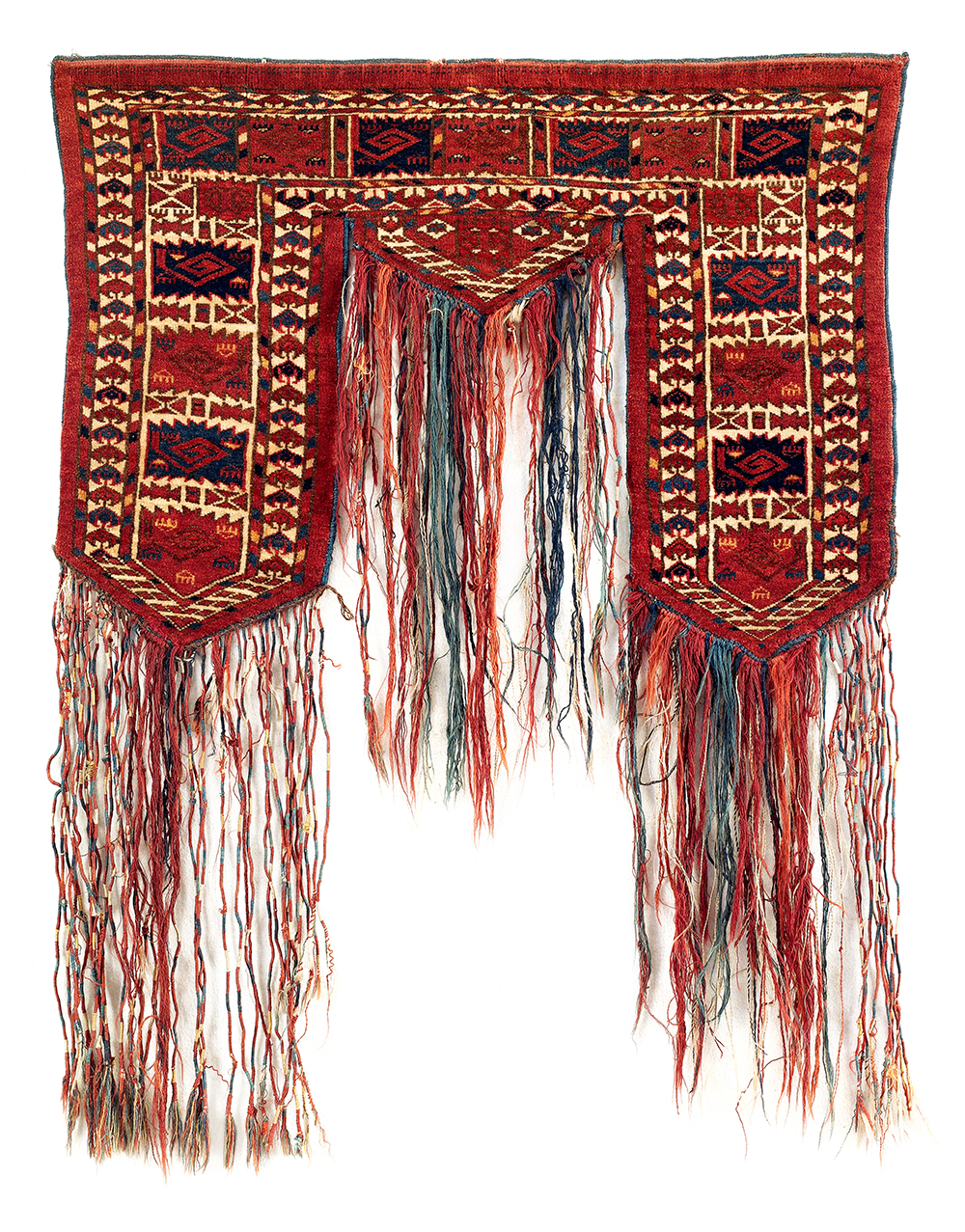
Lot 110, Tekke Tiurkman Khalyk, West Turkmenistan, 19th century, 52 x 72 cm, estimate €9,000, sold for €14,640 ($18,005)
The large group of fifteen Central Asian suzanis, most of which were consigned from the UK, produced very mixed results. The three ‘best’ examples, two Shahrisyabz embroideries pieces and a Bukhara large-medallion piece (lots 128, 132 and 165) proved too rich for a market already pre-warned about the upcoming deluge of pieces from the Ignazio Vok collection, the first tranche of which is for sale next Spring. Most successful of those suzanis that did sell was a good-looking Ura Tube piece, lot 187, which fetched a very strong €20,740 ($25,510), well above average for the type. Lot 79, a Kermina suzani, and lot 207, a Bukhara piece, also sold well at €15,860 ($19,510) each.

Lot 187, Ura Tube Suzani, Uzbekistan, 215 x 183 cm, first half 19th century, estimate €14,500, sold for €20,740 ($25,510)
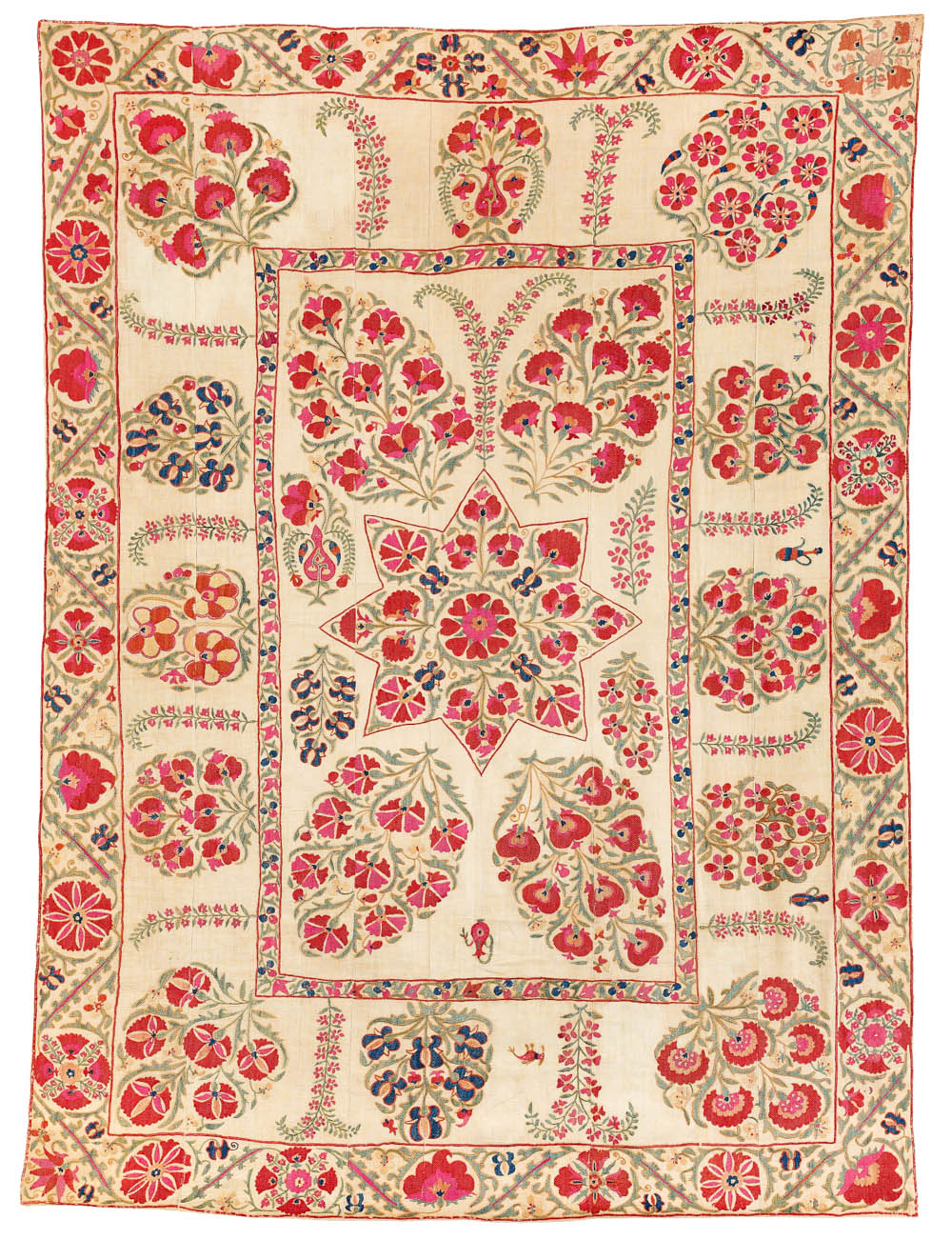
Lot 207, Bokhara Suzani, Uzbekistan, 206 x 154 cm, circa 1800, estimate €16,000, sold for €15,860 ($19,510)
It is not often that the second highest price in a sale is paid for an acknowledged ‘fake’, but that’s what happened in Wiesbaden. Lot 106, an early 20th century ‘Tuduc’ copy of a 16th century Turkish small-pattern Holbein carpet in the Brukenthal Museum in Sibiu, Romania (published by Vegh & Layer in 1925 and Schmutzler in 1933) was bought by the Turkish trade for an extraordinary €41,480 ($51,o20) against a €2,000 estimate, surely a world record for a carpet by the master forger.
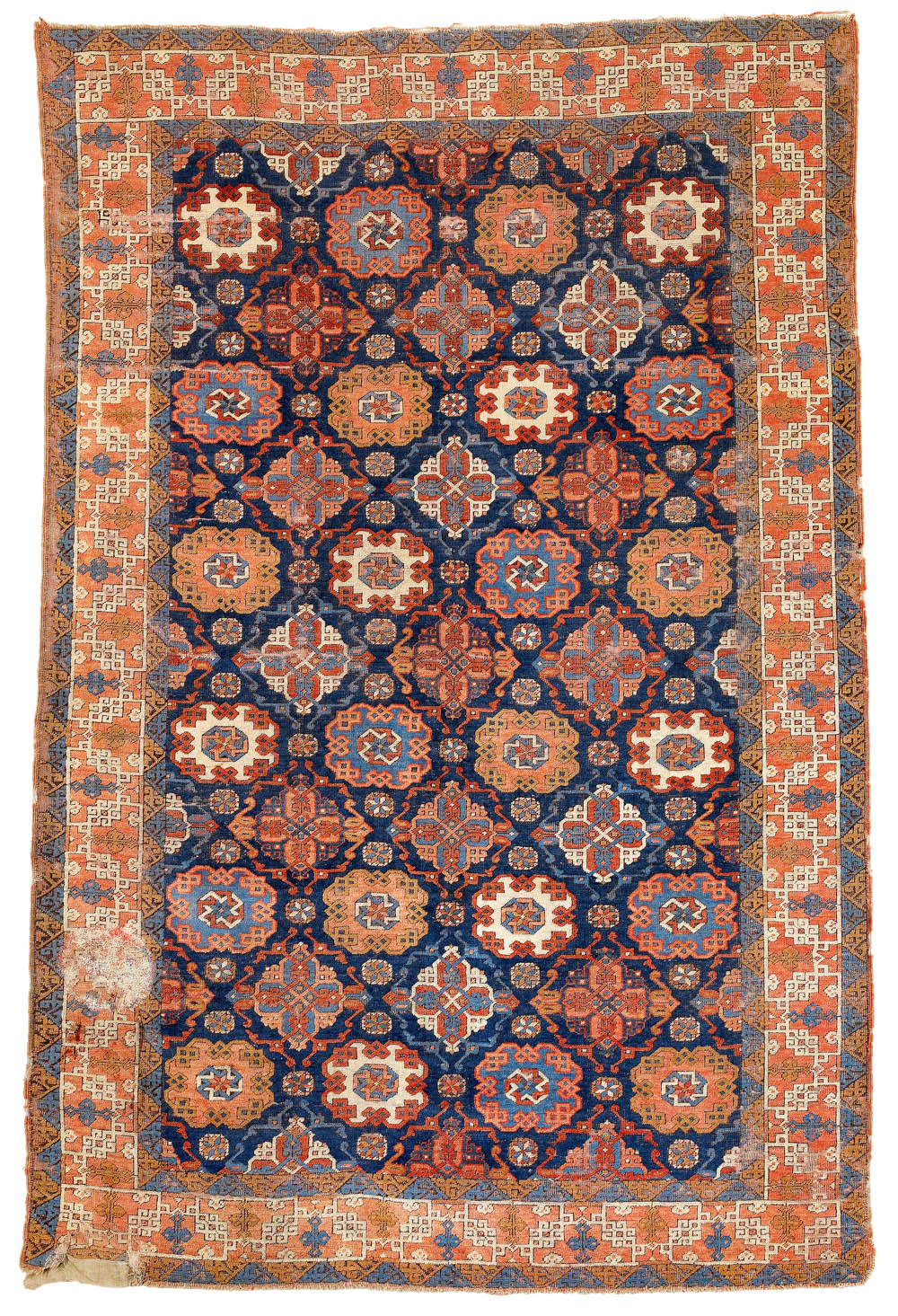
Lot 106, Tuduc ‘small-pattern Holbein rug, Romania, 270 x 177 cm, circa 1930, estimate €2,000.00, sold for €41,480 ($51,020)
A more authentic classical Turkish offering, a 16th century white-ground ‘bird’ Ushak rug, lot 52A, was a late sale entry. Formerly in the Wher Collection, it sold just over estimate for €24,400 ($30,010).
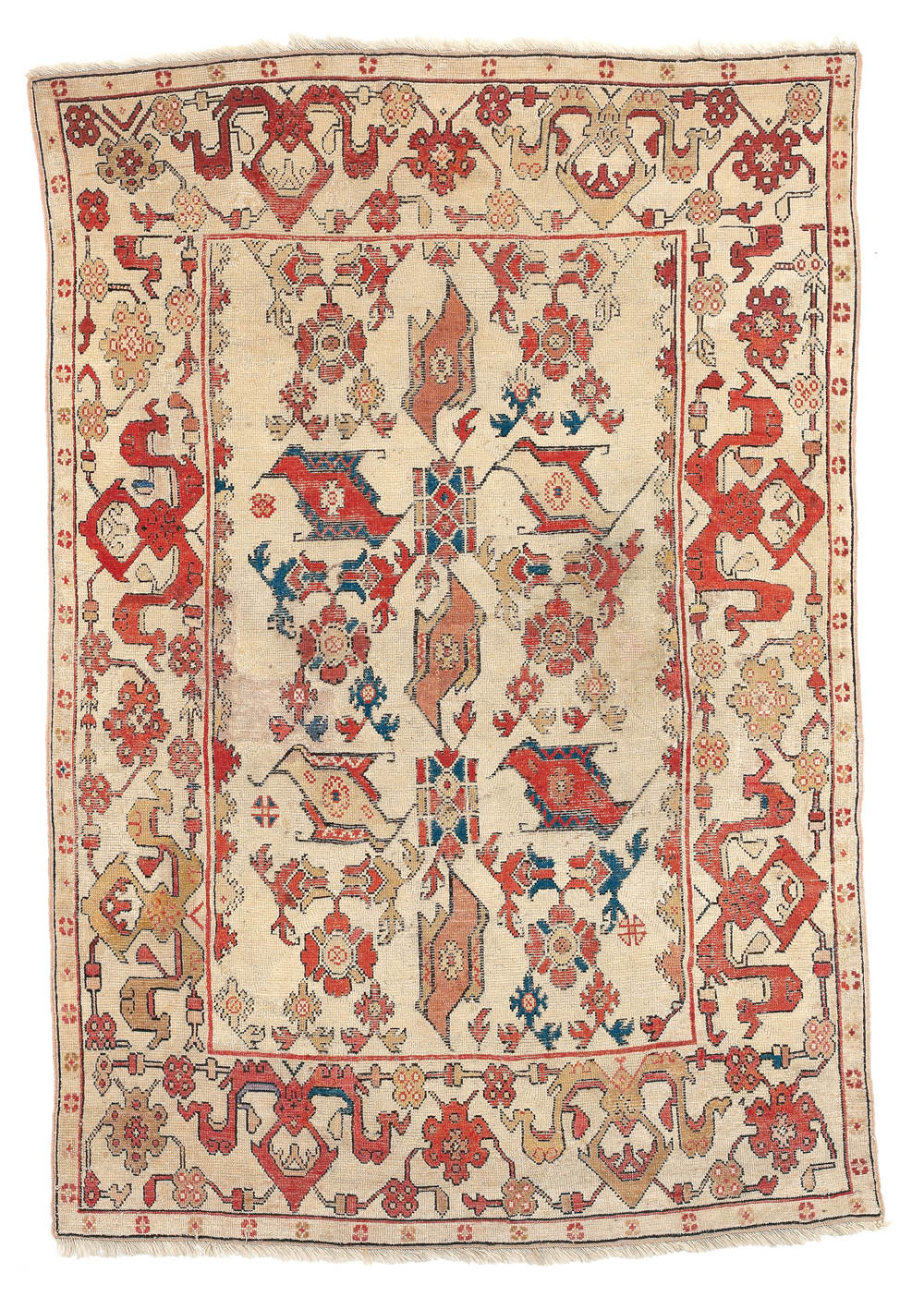
Lot 52A, Selendi Bird Ushak, West Anatolia, circa 196 x 133 cm, mid 17th century, estimate €19,500, sold for €24,400 ($30,010)
Probably the best of the Caucasians on offer was a white-ground Harshang design Shirvan long rug, chosen for the catalogue cover (lot 209), which came in over estimate at €13,420 ($16,510). Other did less well or were subject to ‘provisional’ sales.
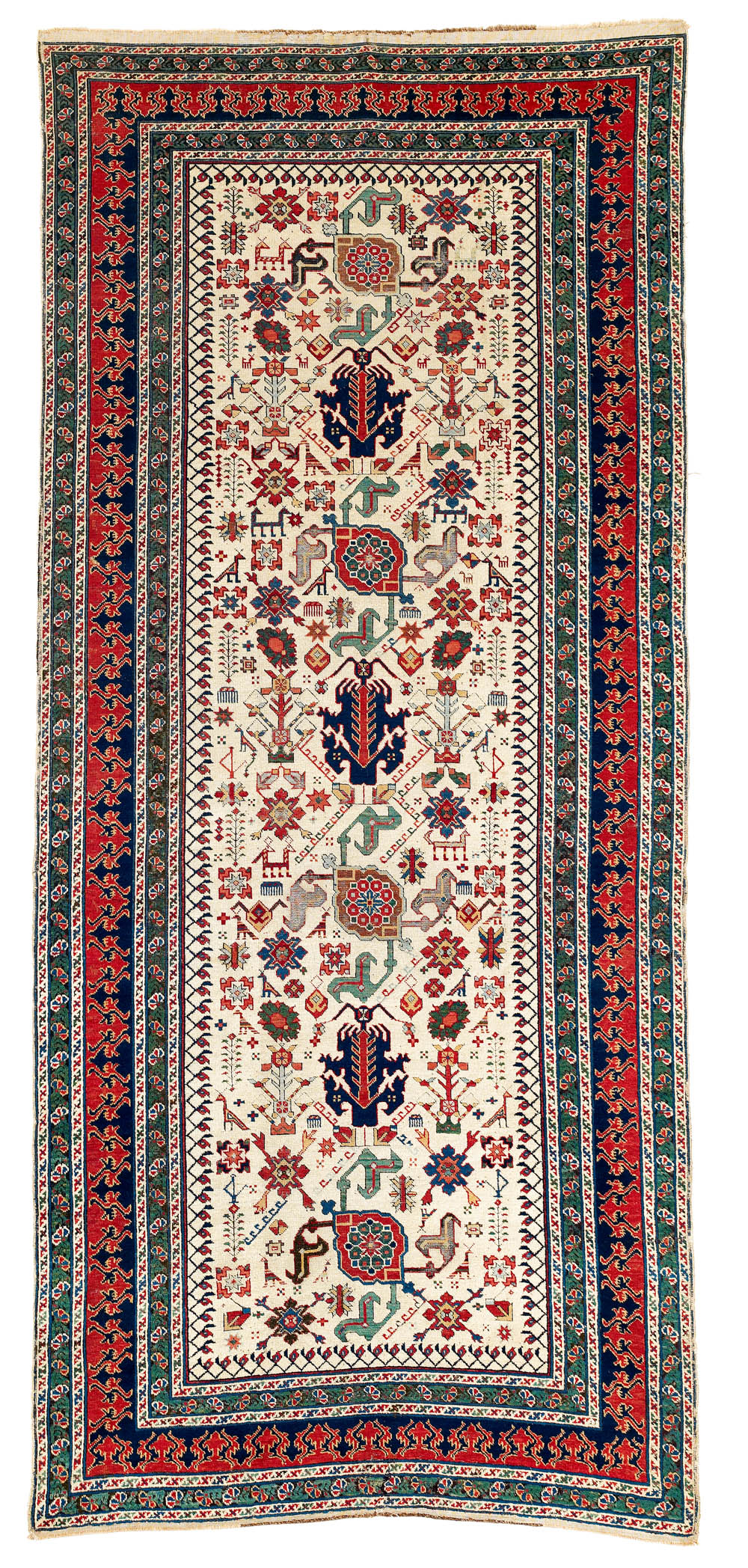
Lot 209, Shirvan rug, East Caucasus, 308 x 136 cm, mid 19th century, estimate €7,500, sold for €13,420 ($16,510)
An excellent detached pair of Shahsavan sumakh ‘turtle’ design bags, the property of an American collector, lot 179, that had failed to sell at SNY last January, fared better in Germany, where they made €9,150 ($11,255).
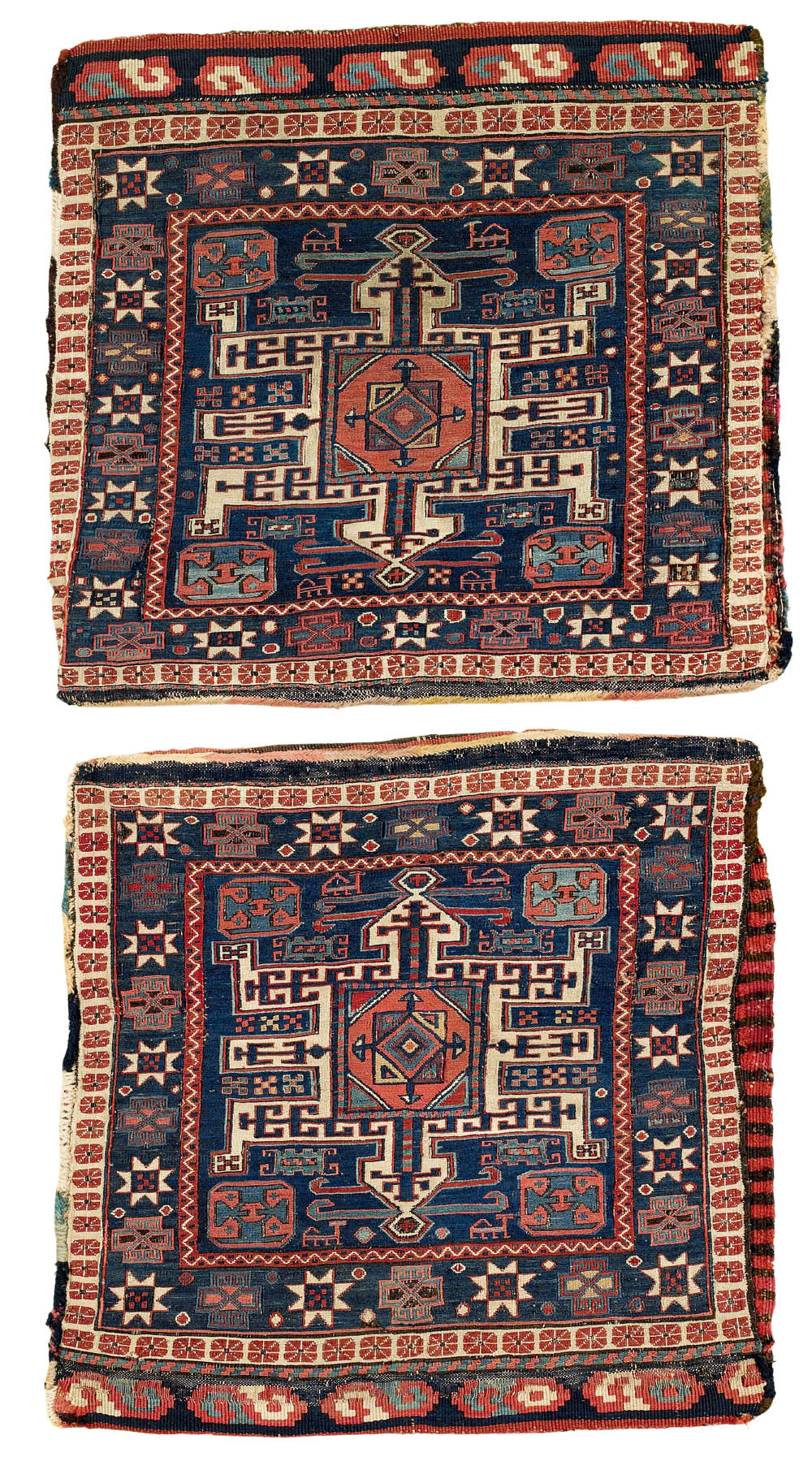
Shahsavan Khorjin, Moghan-Savalan region, circa A: 50 x 52 cm, B: 49 x 53 cm, mid 19th century, estimate €5,400, sold for €9,150 ($11,255)
There were also several European pieces, including five lovely late Renaissance tapestry cushion covers woven in north German workshops run by Dutch emigrants (lots 92-96), which were purchased by their consigner from the London dealer C. John many years ago. Estimated at €1,800 each, they all sold for what were in fact give-away prices between €2,685 ($3,300) and €3,965 ($4,875).

Lot 96, Tapestry cushion face, Northern Germany, Hamburg, 17th century, 53 x 50 cm, estimate €1,800, sold for €2,806 ($3,450).
A final curiosity was Le Vase, woven in knotted pile to a design by Pablo Picasso for Marie Cutolli’s Paris studio in 1960. This fetched €7,320 ($9,000).

Lot 182, The Vase by Picasso, Cuttoli Studio, Paris, 1960, 152 x 202 cm, estimate €7,000, sold for €7,320 ($9,000)


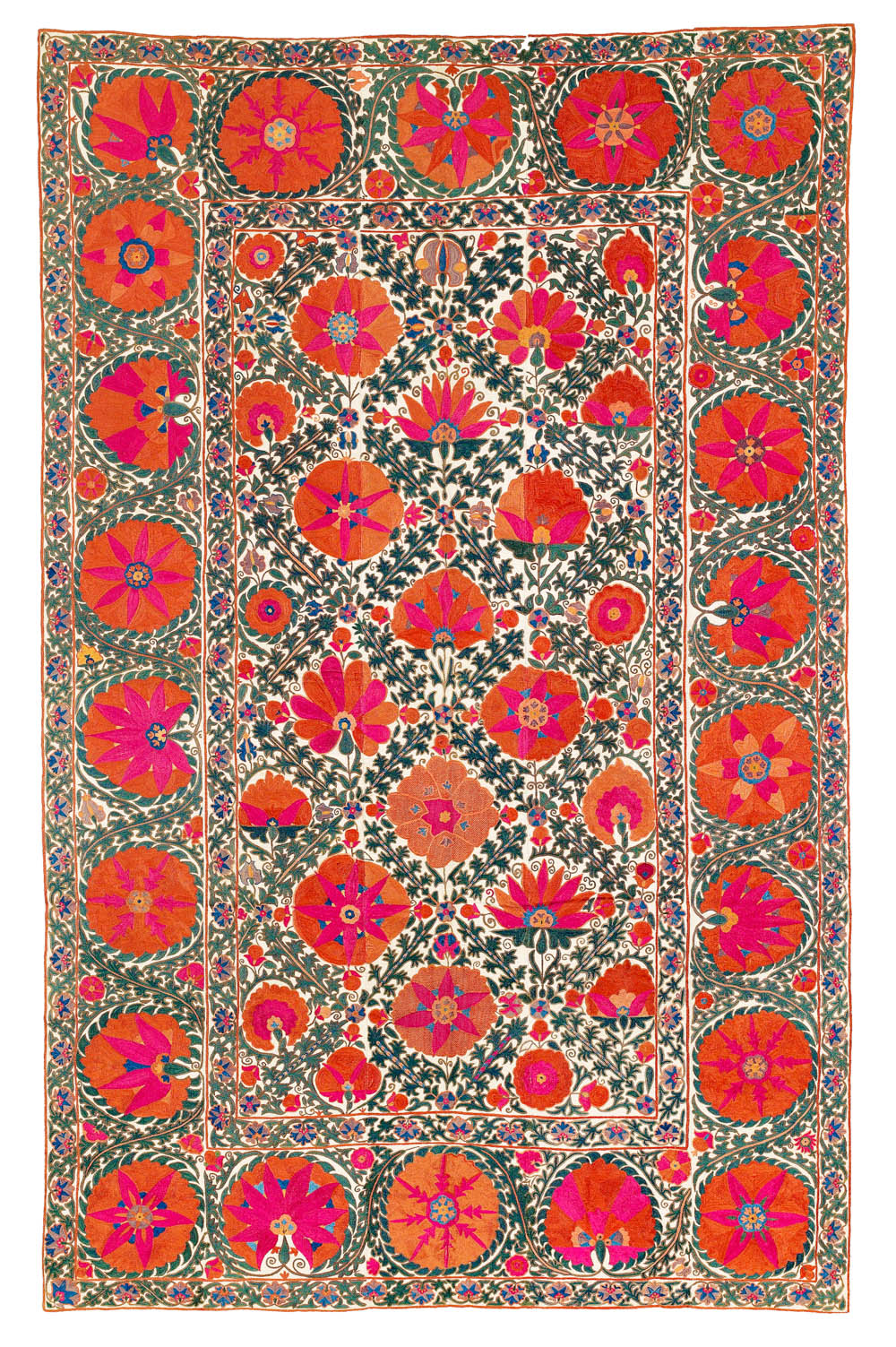
























Comments [0] Sign in to comment